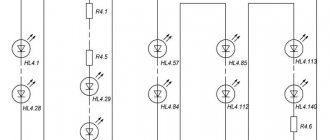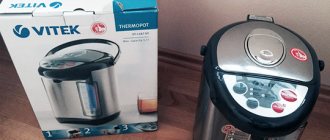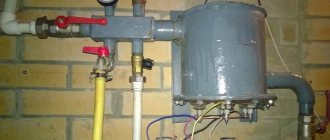Even if you carefully operate the dishwasher according to the instructions, you may encounter the fact that one day the equipment refuses to work. Minor damage can be found and repaired on your own, but in some cases you will have to call a specialist.
In this article we will give the most common causes of breakdowns and discuss how to fix them at home. The repair manual is universal, suitable for all free-standing and built-in models of the following brands: Ardo, Beko, Bosch; Candy / Kandy, Gorenje / Gorenje, Electrolux / Electrolux, Euronova / Euronova, Haier / Haer, Hotpoint Ariston / Hotpoint Ariston, Indesit / Indesit, LG / Eldzhi, Miele / Miele, Samsung / Samsung, Smeg / Smeg, Whirlpool / Whirlpool, Vestel / Vestel, Zanussi / Zanussi, Siemens / Siemens, Neff / Neff, Hansa / Haesa, Aeg / Aeg, Ikea / Ikea, Atlant.
Basic faults
Doesn't turn on
- Faulty wires, plugs, sockets. Damage to the dishwasher wires or plug may cause the dishwasher to shut down or short out. If kinks, breaks or breakage of the fork is detected, they need to be replaced, which you can do yourself or call a specialist. In order to make sure that the outlet is working properly, you need to plug in another device: an iron or a kettle.
- Malfunction of the surge protector located inside the housing. Damage or burning of the contacts in the surge protector leads to the dishwasher turning off, the housing receives an electric current, the plugs “fly out” and the RCD turns off. The element can only be replaced as a whole, it cannot be repaired.
- The buttons on the control panel are broken, do not press, dangle or sink when pressed. It is necessary to disassemble the front panel of the dishwasher and check the bolts and latches on the back side. If the fasteners break and the pushers fly out, the buttons must be replaced or the control module must be reflashed. Repairs cannot be carried out without calling a specialist.
- The control module is faulty - the LEDs do not light up and there is no indication, there is no response to pressing buttons. Most often you have to replace the assembled module; repairing electrical boards is usually not economically feasible, but you can try.
- There is no switching on due to chafing of the wires in the housing. Damage to the wiring inside the dishwasher can cause not only a failure to turn on, but also a short circuit. It is difficult to fix the problem yourself, since the entire equipment must be disassembled.
Does not heat or overheats
- The heating element has burnt out. To check or repair the heating element, you need to turn the device over, remove the back wall and visually check the heating element, having first removed it. We recommend ringing the heating element using a tester. You can replace the element yourself, since it is considered a consumable item.
- The power contacts on the control board are burnt. If the contacts are faulty, the on-board computer of the dishwasher does not transmit the command to heat the water. Sometimes mechanical cleaning of the contacts is enough to restore functionality.
- Problems with the thermostat or temperature sensor. For diagnostics, the disconnected and freed from the baskets PMM is disassembled, dismantling the lower sprinkler and debris filter. The equipment is installed upside down, the side fastenings are removed and the drain pipe is disconnected. When the bottom of the car is raised, the thermostat will be accessible, which is disconnected from the wires. You can test the thermostat and try cleaning the contacts. If the tester shows a breakdown of the temperature sensor, it is replaced. If possible, additionally check the wiring leading to the thermostat.
- If the water overheats, the control unit or temperature sensor is faulty.
Doesn't drain water
- The garbage filter is clogged. Residues from the dishes gradually collect in the filter cavity, preventing normal water circulation. To normalize operation, it is necessary to clean the filter. You can do this yourself.
- The drain pump is jammed or burned out. A characteristic sign is silence when the wash cycle ends and the water starts draining. The part is practically beyond repair and requires replacement entirely.
- If there is the sound of an electric motor running, but the fluid is standing still, large debris has entered the snail pipe. We disassemble and mechanically clean.
Water is not pouring
- Overfill protection is activated. When the dishwasher is empty, the overflow protection sensor may activate, which turns on the drain pump to protect against flooding. It is necessary to disconnect the PMM from the power and water supply, drain the water from the pan and clean the drain filter, dry the dishwasher with a hairdryer or leave it open for several hours. If the problem repeats, you need to call a technician - there may be a malfunction of the pump or pan.
- The inlet valve burned out - a small electromagnetic element that controls the flow of fluid. It burns out due to wear, voltage surges or clogging. Contact in cable connections between parts may also be lost. In this case, it is necessary to call a technician and replace the inlet valve.
Doesn't wash well
One of the most common problems when dishwashers break down is clogged impeller nozzles, or spray arms. If they become heavily clogged, the pressure of the flushing jets is not enough to maintain rotation and the mechanism stops.
The dishes remain dirty on one side. The spray arms are easily removed and washed with a stream of water. More details here.
Stops during operation
- The Aquastop system is activated. Some modern dishwashers are equipped with the Aquastop leak protection system. If water leaks into the dishwasher tray, the drain pump will turn on and stop operation. As a rule, the equipment reports this with a certain code on the display or by flashing indicators. To unlock the PMM, turn off the power supply, remove water from the pan and dry the internal parts of the equipment. After drying, the PMM is restarted; if the problem persists, a technician must be called.
- Another problem could be glitches or failure of the Aquastop sensor itself, which erroneously reports a leak if there is none. In this case, the sensor needs to be replaced.
- The float switch is activated. Modern dishwashers are usually equipped with a float switch to protect against overfilling. If it does not work correctly, it needs to be checked. Remove the front bottom cover, get to the pan and check the float for sticking manually. Tapping helps fix the problem. If this does not help, you need to call a technician and replace the switch.
- If the equipment often does not complete the cycle even after repairing the above-mentioned modules, the main control module is faulty.
Leaking
- Door seals are torn. If the seals are damaged or dry out, the door does not close tightly, causing water to leak from the bottom. Minor damage to the rubber does not affect the operation of the PMM in any way. Repairs are carried out by replacing the upper and then the lower seal. The equipment is disconnected from the network, the door is fully opened, and the loading trays and baskets are removed. The seal is carefully pulled out of the recess. The gutter is wiped with cotton swabs and a dry rag, then a new seal is installed, pushing the rubber bands all the way.
- Broken lock on the door. If there is no characteristic click when the door closes, the lock is most likely faulty. The door does not close tightly, causing water to leak. A breakdown should be accompanied by an error code with a corresponding indication in the form of an icon, which does not always happen. To replace the lock, de-energize the device, remove the facade and control panel, unscrew the lock and replace it with a new one.
- The door or fastening to the body is deformed. If used carelessly, the door fastening bracket can be deformed, a couple of degrees not noticeable to the eye, enough for the rubber band to begin to let water through. For diagnostics, the door is visually inspected for the presence of dents or loose fit to the PMM. We recommend replacing the mount with a new one.
The door won't close
- The lock is broken. The door does not hold or lock in the closed position. The lock can jam even when the door is open, which will not allow the PMM to be hermetically sealed. You can solve the problem one-time using a screwdriver by wedging the lock tongue, but it is better to completely replace the latch element.
- When opened, the door suddenly “falls out”. Most likely, the cable or the tensioner itself (2 small springs) broke. You can replace the tensioners yourself, but you will have to disassemble the housing. During self-repair, the old cable and spring are replaced with new ones, preferably original ones.
Burnt out intake or exhaust valve
- The inlet valve is burnt out. If the inlet valve fails, the PMM will not take in water, the part will not respond to controller commands, or, conversely, will not ensure closure of the membrane. The equipment is disconnected from the network and water supply, the bottom or base panel is removed, and the reservoir with the hose is disconnected. The reservoir is opened and the inlet valve is replaced. In some machines you won’t be able to do this yourself; you need to call a technician.
- The water discharge recirculation valve has burnt out (usually installed on expensive models, such as Bosch). If the outlet valve fails, water does not leave the PMM, error e19 lights up on the panel. The part requires replacement.
Debris gets into the main motor
If debris gets into the high-pressure motor (pump), the machine will make a characteristic noise, grinding, whistling, and the electric motor may jam, causing a hum. A burning smell appears and fuses trip. This happens due to loading dishes into the PMM that are contaminated with large food debris, such as seeds from berries and fruits. We take out the module and try to wash it, it usually helps.
The pressure switch (water pressure sensor) is broken
- The pressure sensor is broken. If the pressure sensor breaks down, continuous circulation of water occurs, there is no heating and automatic, continuous drainage of the liquid occurs. The problem can only be solved by replacing the sensor.
- When the air tube connecting the water tank and the sensor is clogged, water overflow or underfill occurs. The part requires removal and mechanical cleaning.
The turbidity sensor is clogged
A turbidity sensor, or aquasensor, allows equipment to “understand” how well the dishes have been washed by assessing the light conductivity of the water. If the surface of the aquasensor becomes clogged, the machine automatically extends the cycle without completing the wash and increases water consumption.
- If the sensor is covered with grease, you can disassemble the equipment and degrease the sensor.
- The sensor may become clogged due to salt deposits (scale) - take a screwdriver and “pick out” the hard white crust.
If mechanical cleaning does not help, we replace the module ourselves or call a technician.
No grounding
- The surge protector that protects electrical circuits from burning during power surges is broken. Damage or weakening of the contacts in the surge protector causes “glitches” in the control module, causing incorrect operation, and ultimately leading to equipment shutdown. Also, a malfunction of the SF leads to an electric shock through the housing.
- The body is electrocuted. It is necessary to fix the outlet or connect the PMM to another outlet equipped with grounding. The socket for connecting the dishwasher must be connected to the circuit breakers using a three-wire wire.
- Knocks out the circuit breaker or RCD. If there is no grounding, the circuit breaker may be knocked out due to spurious interference. Another reason may be inappropriate, old electrical wiring that requires replacement.
Doesn't dry out
- The thermal fuse of the air heating element trips. The problem appears over time when the condensation dryer housing overheats. The thermal fuse needs to be replaced, most often together with the dryer module.
- The air heating element has burned out. If the heating element fails, a burning smell may appear. A part needs to be replaced.
- The warm air circulation motor has burnt out. The problem occurs when there is a power surge, a dirty air filter, and often appears in conjunction with a broken mains filter. The assembly is changed or the winding is rewound (rarely helps and is not cost-effective).
Hoses become clogged
Do not place dishes that are excessively soiled with food debris into the dishwasher. All fat, bones and other biological residues accumulate in the pipes and hoses. To eliminate the problem, the PMM is disassembled and the hoses are cleaned manually.
Sprinkler does not spin
- Impeller clogged. Remove the nozzles and rinse the nozzles in the opposite direction under running water.
- Loss of tightness. If the impeller loses its tightness, water can fly out into the gaps that appear. Sprinklers need to be replaced.
- The secondary plastic gasket has worn out. It is necessary to remove the impeller and replace the gaskets.
- High pressure pump malfunction. If the nozzles are OK, you need to inspect the pump. If the motor hums but does not rotate, the problem is most likely in the pump. Disconnect the machine from the network, open the case, loosen the pipe clamps and disconnect the connectors. Release the latches and unscrew the mounting screws. Next, release the fastenings of the other pipes, move them to the sides and remove the pump from the housing. Now install the new motor and reassemble the structure in reverse order.
Why does my dishwasher leak?
If you see a puddle in front of the dishwasher, before calling a technician and thinking that the door is broken, rule out other reasons:
- The door was opened during drying . When the dishes are on the dryer, steam comes out of the machine, it remains in drops on the edge and flows down the seal to the floor. There is no damage here. Do not open the dishwasher until drying has finished.
- The seal is not level . The chamber is depressurized. You need to level the machine.
- Wrong detergents . If you use bad detergents or add more than necessary, a lot of foam will form. There will be not only water with foam flakes near the machine. Don't use so much detergent and choose good manufacturers.
- Detergents have clogged the seal . When there is a lot of detergent, the residue settles in the seals. And a puddle appears on the floor. To remove excess detergent, you need to run the dishwasher on high temperature without dishes.
- Filters are clogged . The solution is to clean them on time.
"Weak points" of famous brands
Every technology has its weaknesses, no matter how advanced the company and its products are.
Electrolux
- problems with water supply and drainage;
- heating systems;
- electronics;
- impellers;
- leaks.
Hotpoint-Ariston
- "Aquastop" system;
- heating elements;
- pressure switch;
- valves
Bosch
- "Aquastop" system;
- Launchpad problems;
- clogged filters;
- circulation pump;
- hatch lock.
Differences between dishwashers from different manufacturers
Troubleshooting any malfunction should be based on two things - an understanding of the general principles of operation of dishwashers and the design features of models of different brands.
For example, Bosch dishwashers have a heating element built into the pump , which complicates diagnostics and makes repairs more expensive. In the Hans PMM, the inlet valve is connected to the Aquastop system and is located on the inlet hose (its breakdown is a common cause of water intake, but lack of washing).
Its repair and replacement will be much more expensive than for models in which the valve is located in the machine body. Older models of any brand do not have a display on which you can see the error code, and you will have to find out what exactly is broken yourself.
The conclusion follows from this - you cannot start repairing your device without first studying the instructions, names and locations of parts.
Find out everything you need to know about dishwasher water in this section.
Recommendations and lifehacks
- Clean dishes from food residues before loading them into the PMM.
- Load the upper basket with small, not heavily soiled dishes.
- Load the lower basket with the dirtiest dishes.
- Start unloading dishes after drying from the bottom section.
- Do not overload the PMM.
- Carry out preventive cleaning of parts regularly - at least once every 3 months.
- Use professional dish degreasing products.
- Do not overuse short wash cycles.
Prevention measures
In order to prevent a situation where half the program has passed and the washing suddenly stops, you need to remember several rules for operating the equipment:
- Place dishes cleaned of large food debris into the basket;
- Ensure the cleanliness of the coarse filter;
- Change the filling filter periodically;
- Wash the tank, blades and the entire machine from the inside;
- Clean the dishwasher from scale;
- Dry after each wash cycle.
In order to avoid problems with the operation of dishwashers, it is necessary to monitor their operation and carry out maintenance of the machine from time to time. This will take much less time than searching for the causes of the breakdown and its subsequent elimination.
FAQ
How to stop the program and unlock the door
Canceling a program is most often done by pressing the “Start” key and holding it for 3 seconds. After stopping the program, the machine will drain and unlock the door.
If the water is turned off and the process is running
We recommend disabling PMM as soon as possible to avoid program failure.
Why does the tablet fall out?
Incorrectly selected tablet, you need to change the brand. It is also necessary to check the operation of the dispenser.
Required pressure
Each equipment has its own operating pressure (standard 1.5-2 atmospheres), determined by technical parameters. In city water supply there is usually from 0.3 to 6 atmospheres for cold water and from 0.3 to 4.5 atmospheres for hot water. To get acquainted with information on a certain PMM, you need to study its passport.
What to do to fix the problem
You can fix problems in any brand of dishwasher (Ariston, Hansa, Beko) yourself. The main thing is to act consistently. Immediately check whether the camera door is locked properly.
Checking the Start button
Visually inspect the control panel. If the power key is stuck or detergent gets into the connectors, it will need cleaning and replacement. Disassemble the panel and check the button contacts with a multimeter. Replace the part if necessary.
Replacing the capacitor
As we wrote above, unstable voltage can ruin not only your nerves, but also your technique. Due to the sharp drop, the capacitor could burn out. It is necessary to check and replace the element:
- Remove the decorative bottom panel under the door.
- Remove the pallet mounting parts.
- Open the hopper door, unscrew the drain filter and pull out the spray arm.
- Place the dishwasher on the back wall.
- Unscrew the screws and remove the pan (at the same time disconnect the wiring, if any).
- Find the capacitor. The part is attached to the circulation pump.
- If no signs of scorch are visible externally, then check the element with a multimeter.
- Also inspect the wiring and make sure the contacts are working properly.
Does the list of factors change depending on the dishwasher model?
The list of reasons is the same for all brands and models of dishwashers because they work on the same principle.
Each manufacturer usually has its own:
- Bosch – E3/E8;
- Beko – 0000;
- Electrolux – i10, iA0;
- Indesit – Al02;
- Hansa, Samsung – E1;
- LG–IE.
The code only indicates the presence of a problem, not a specific malfunction. Therefore, in any case, inspection and diagnosis of the machine is necessary.










